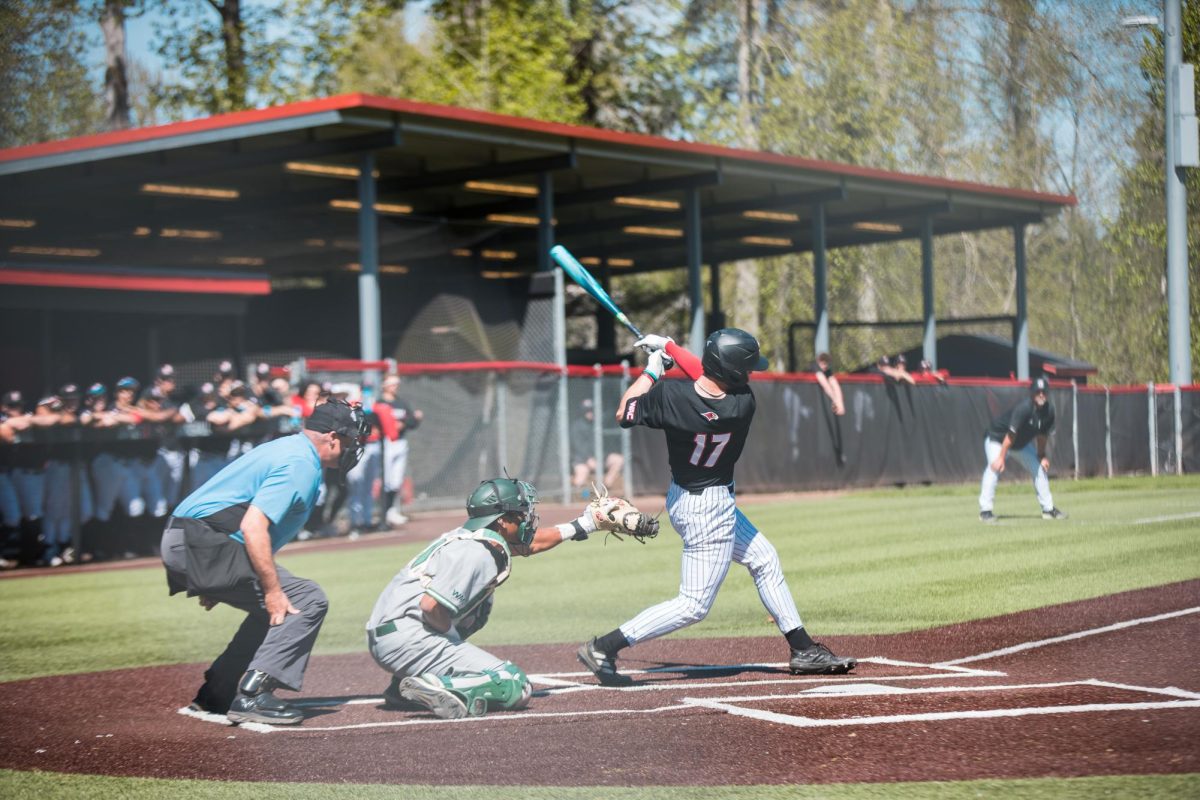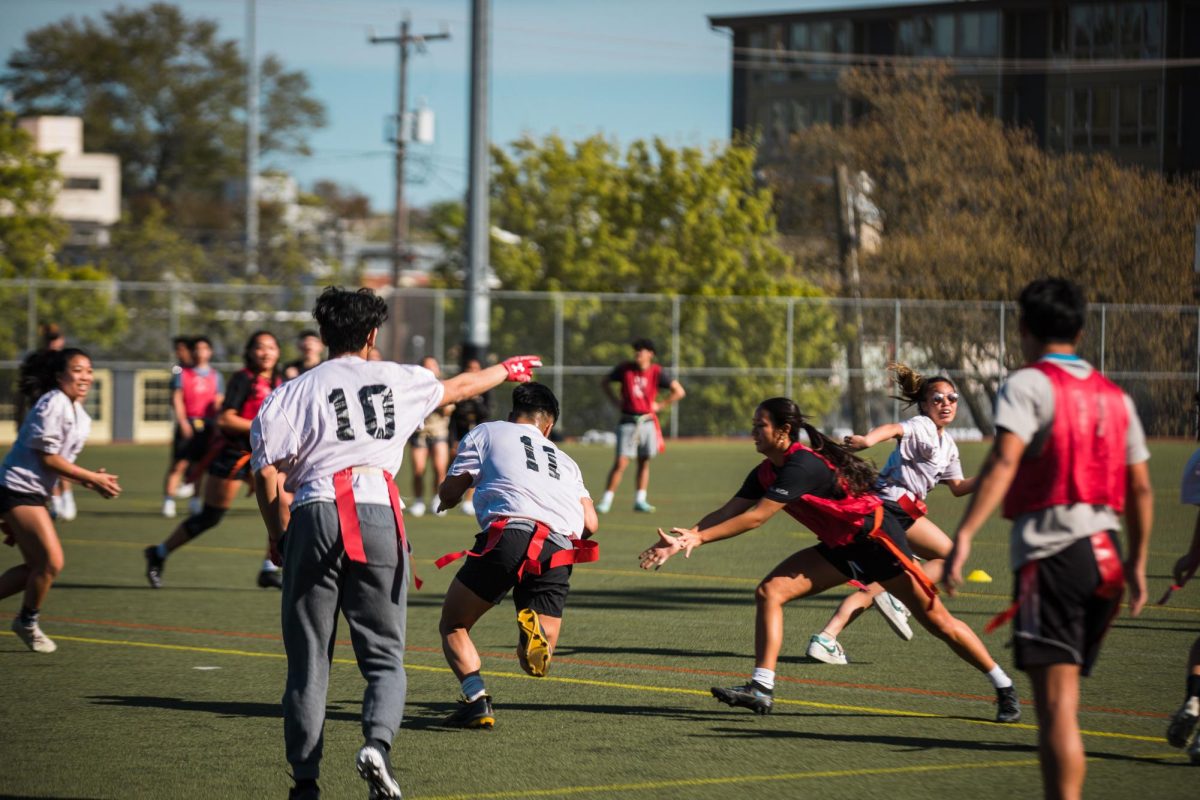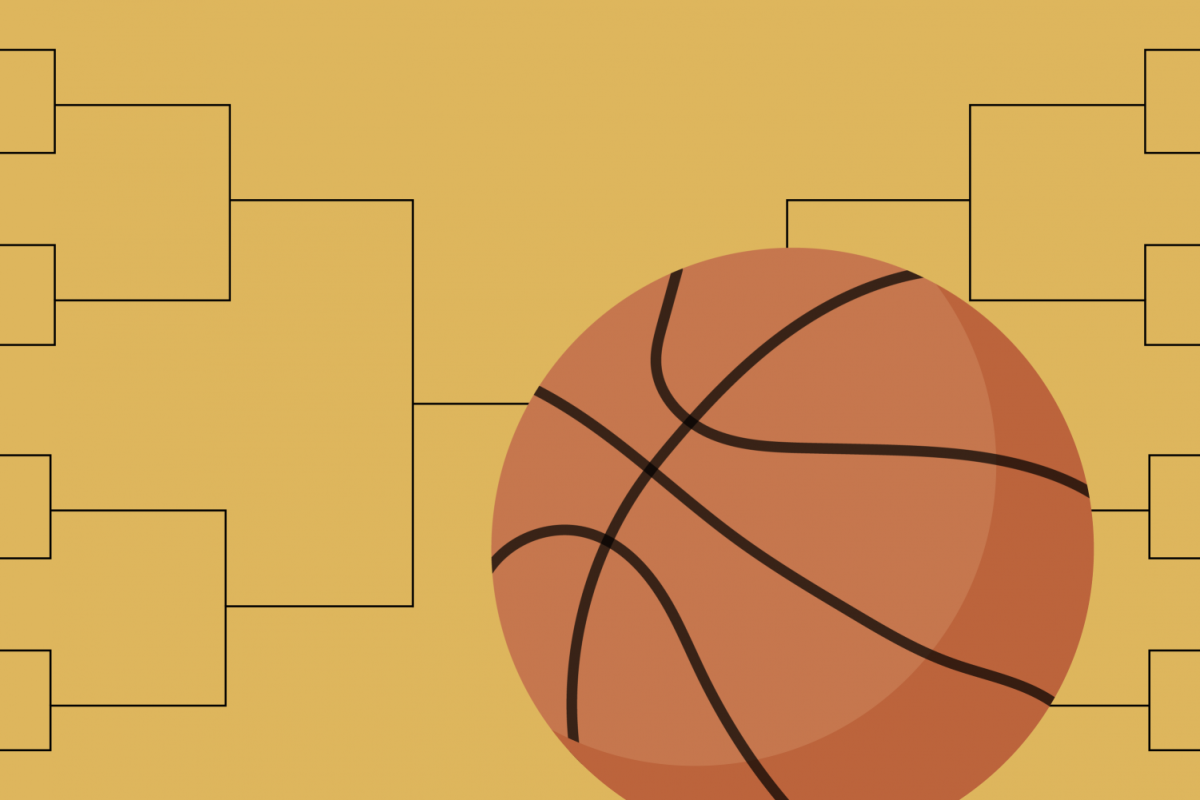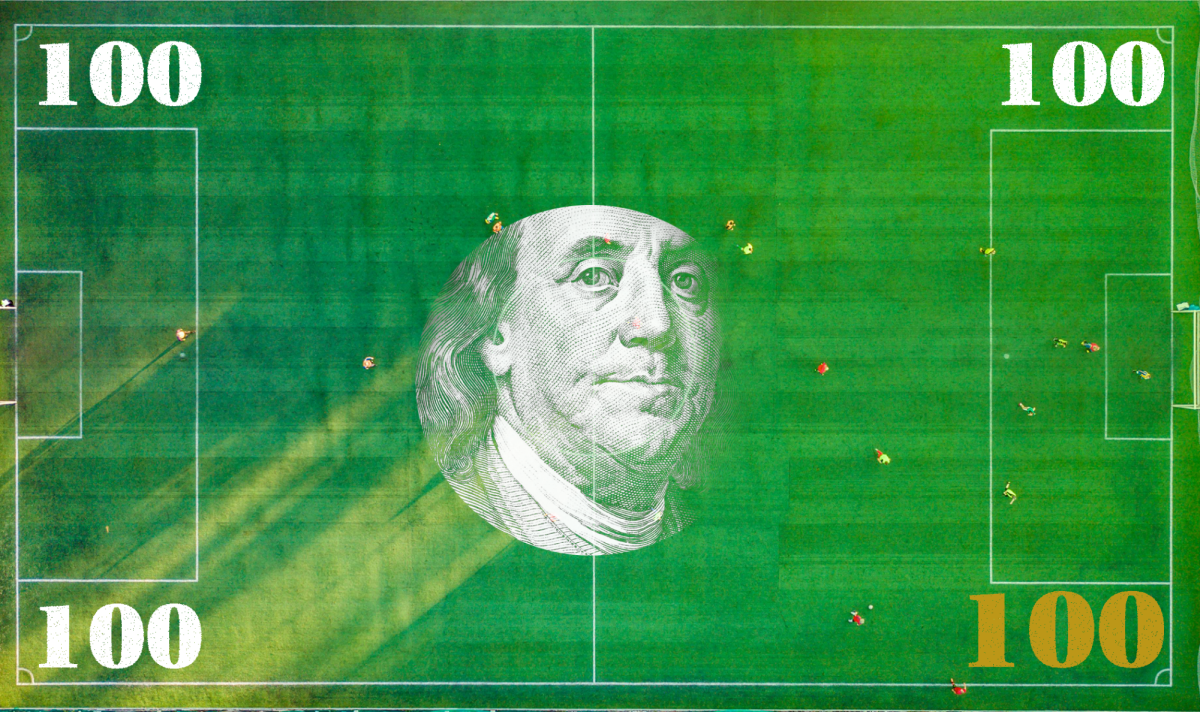Last weekend, the University of Washington campus, and much of the city of Seattle itself, was flooded with gold and purple. Saturday’s tense college football matchup between longtime rivals the UW Huskies and the University of Oregon Ducks was a cause for citywide excitement.
Although the day ended tragically for the Huskies, the game was far from a disappointment. For the first time, the Huskies were featured on ESPN’s “College Game Day,” drawing national attention to the game. Between the flood of costumed fans and the roaring energy of college students and avid alumni alike, it was made clear on Saturday that college football is not just for students. It’s a matter of pride that involves the entire city of Seattle and far beyond.
But what many people don’t realize is that in addition to being a source of celebration for fans, college football plays another important role on college campuses: making a profit.
With all the hype over a single football game, one can imagine the kind of revenue that UW football generates in a single season. According to a 2011 Forbes report, the UW tops the list of Pac-10 schools in football profit with an annual total of almost $15 million. In addition, the UW basketball program brings in another $4.5 million for the school, which suggests that sports are a vital part of college life.
For small schools like Seattle University, however, the numbers aren’t quite as impressive. Without football teams and national hype, most Jesuit universities barely manage to break even on college sports or end up spending more than is earned in profit. Seattle U, it turns out, is one of these schools.
According to Dr. Timothy Leary, executive vice president of Seattle U, the university spends about $12 million on athletics annually. In comparison, Seattle U athletics generate about $2.5 million in revenue, leaving the school in the red when it comes to the sports budget.
“Revenue would be low in part because this is year five, so we’re just moving back into Division I Athletics,” said Leary of the budget shortfall. “Much of that revenue is reflective of the wins and losses, in particular of the major sports. We don’t have football so that major sport would be basketball and that is not a group that’s been highly successful yet on the court, so it stands to reason that the revenue generated for the department is not yet where we will need it to be.”
Leary pointed out that Seattle U’s revenue and spending numbers are similar to those of peer institutions in the West Coast conference like Gonzaga, Santa Clara and University of San Diego. If anything, Seattle U is on the low end of the athletics-budget spectrum, spending less than its peer schools on athletics.
While $12 million may seem like a lot to spend on sports, this number represents only 4.6 percent of the total school budget. According to Leary, President Fr. Steven Sundborg, S.J. has said that athletics will always remain around 5 percent of the school’s budget, which matches the spending of West Coast peer schools. For students who might think that athletics funding is spent flagrantly, coaches and athletes feel that the money spent on athletics is just as much as is needed.
Women’s basketball head coach, Joan Bonvicini said that when she first arrived at Seattle U, the money spent on athletics was minimal. The coaches, for example, drove the athletes in vans to away games, which is not as safe as the buses that athletics now use. Bonvicini said that increasing the amount of funding for sports, as well as establishing relationships with businesses, has increased the money available for important goals such as recruiting.
“One responsibility of all sports is fundraising,” said Bonvicini.
It’s a little-known fact that sports teams are required to raise thousands of dollars each year to for the athletics budget.
Bonvicini and Director of Athletics Bill Hogan emphasized that there are inevitable costs that come with building a successful Division I team. These include funding for coaches’ salaries, a competitive recruiting budget and, most of all, funding for travel costs. Due to the geography of the West Coast, almost all of Seattle U’s away games include air travel. The costs of plane tickets and hotel funding add up rapidly.
Bonvicini also emphasized the importance of coaches’ salaries and student scholarship to a competitive Division I team. Without great coaches and the best athletes, sports teams have little chance to improve.
“In Division I, athletics are the front porch of the university,” Bonvicini said. “The sports teams are in the paper all the time.”
Although Seattle U loses money through athletics, many believe that Division I sports have benefited to the university.
“When I first got here seven years ago, Seattle U was thought to be kind of a regional campus,” said Hogan. He tells the story of how, when he started working at Seattle U, he dropped off his car at a shop in the Pike/Pine area and, when he asked for a ride back to Seattle U, the mechanics had never even heard of the school.
“Now, everybody knows where it is, and you have these beautiful fields and lights and the teams are competing all over the country,” he said.
As a result of Seattle U’s increased media attention, university officials say the school now attracts more students from out of state and even out of the country, which creates a more diverse student body.
“If you look at the Jesuit schools, the really high academic schools are all Division I,” Hogan said. “In the old WAC, seven states did not have a Division I Catholic university. We got calls from athletes who wanted a Catholic
education and were looking at Seattle U.”
Statistics support Hogan’s claim that Division I athletics have improved Seattle U’s reputation as a Jesuit university. Since 2004, the percentage of out-of-state students has increased from 45 percent to over 60 percent and Seattle U climbed over 10 points to take the number six spot among West Coast universities, as ranked by U.S. News and World Report. Seattle U’s academic renown has increased dramatically in the past five years.
Hogan acknowledged, of course, that Seattle U’s increasing academic rank is the result of a number of factors, and not just the switch to Division I. But even Leary attested to the growth that Seattle U has experienced since switching from Division II to Division I.
“If you ask admissions, they might say that because we’re a Division I school, students are looking at us,” Leary said. “If you talk to [Seattle U] Marketing Communications, they will tell you that marketing and communications around who we are as a university in the West has increased five to tenfold since we’ve moved to Division I Athletics. So it all depends.”
There is no clear way of measuring the benefits or downfalls of Division I sports, but officials feel it is clear that high-profile sports teams increase the school’s diversity by recruiting students from across the nation and the publicity of Seattle U’s athletics add to the university’s reputation as a prominent Jesuit institution. Add a few more wins to the school’s record and Seattle U might just be the next northwest school featured on ESPN.
Alaina may be reached at [email protected]






![The 2024 NBA Playoffs’ Best Moment May Be the First Round [Opinion]](https://seattlespectator.com/wp-content/uploads/2024/04/NBAPlayoffWeb-1200x791.jpg)



